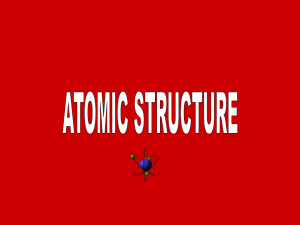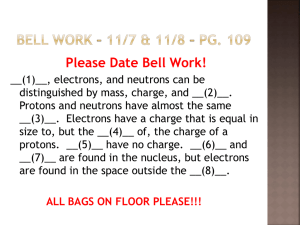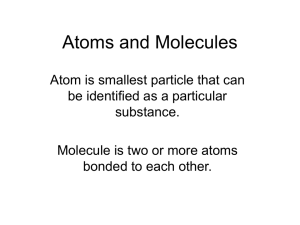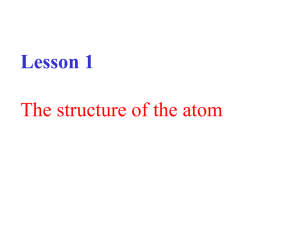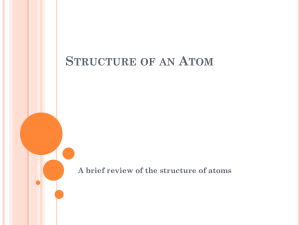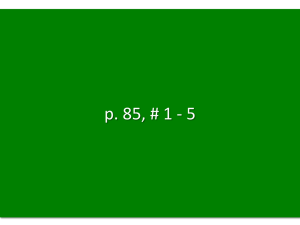Regents review: topic 1 * the atom
advertisement
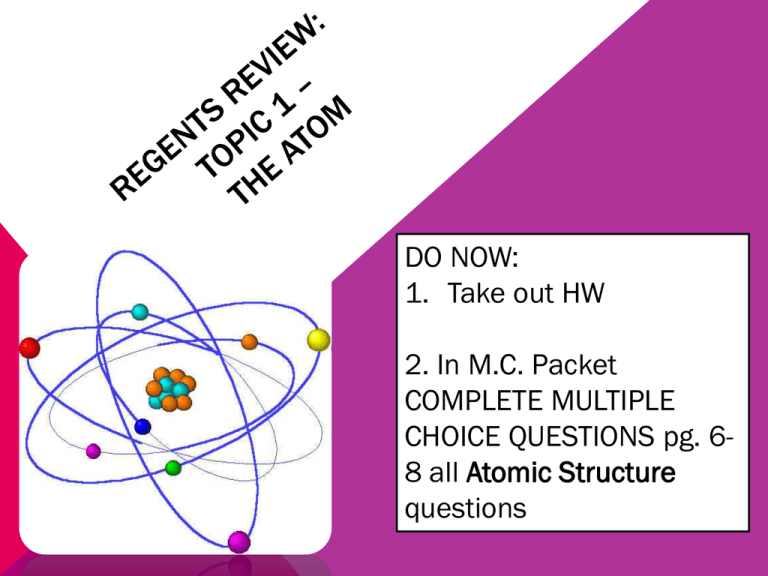
DO NOW: 1. Take out HW 2. In M.C. Packet COMPLETE MULTIPLE CHOICE QUESTIONS pg. 68 all Atomic Structure questions REGENTS REVIEW TOPIC 1 – THE ATOM 1. Modern model of the atom has evolved over a long period of time through the work of many scientists Dalton: (hard sphere) o Elements are made of atoms o Atoms of an elements are the same o Compounds are formed from a combination of atoms REGENTS REVIEW TOPIC 1 – THE ATOM Thomson o Plum Pudding Model Rutherford Experiment oBombard gold foil with alpha particles oAtoms are mostly empty space With small dense positively charged nucleus REGENTS REVIEW TOPIC 1 – THE ATOM Bohr Model: o Small dense positively charged nucleus surrounded by electrons in circular orbit Wave Mechanical Model oSmall dense positively charged nucleus surrounded by an electron cloud o“Orbitals” – areas where an electron with a certain amount of energy is most likely to be found REGENTS REVIEW TOPIC 1 – THE ATOM 2. Each atom is made of a positively charged nucleus with one or more negatively charged electrons 3. Protons and neutrons are found in the nucleus 4. Protons have a positive charge Neutrons have a neutral charge Electrons have a negative charge REGENTS REVIEW TOPIC 1 – THE ATOM 5. # of protons = # of electrons - atom is neutral 6. Mass of proton - 1 amu Mass of neutron – 1 amu Mass of electron – negligible mass Atomic mass of an atom = # protons + # neutrons amu is = 1/12 mass of carbon atom REGENTS REVIEW TOPIC 1 – THE ATOM 7. Each electron in an atom has its own distinct amount of energy oAll electrons in lowest energy = ground state oElectrons fill in energy levels and orbitals that requires the least amount of energy and then move up to the next energy level 8. Electrons gain energy and move to higher orbitals – excited state 9. Electrons return from higher energy state to a lower energy state oEmits energy in the form of light oBright line spectrum REGENTS REVIEW TOPIC 1 – THE ATOM 10.Outermost electrons – valence electrons • Responsible for chemical properties • Most elements max # of valence electrons = 8 (except H which only has 2) • Atoms form bonds to fill their valence shell • Can use orbital notation or Lewis Dot Sructure to show the configuration of the valence electrons 11. Atoms of the same element all contain the same number of protons • Changing the number of protons changes the atom into a different element • The atomic number = # of protons of an element REGENTS REVIEW TOPIC 1 – THE ATOM 12.Isotopes are atoms with equal numbers of protons but different number of neutrons • Isotopes of an element have the same atomic number but different atomic masses 13.The average atomic mass of an element is the weighted average of its naturally occurring isotopes The formula for calculating the average atomic mass is: COMPLETE # 1-16 PG. 2 OF HANDOUT




